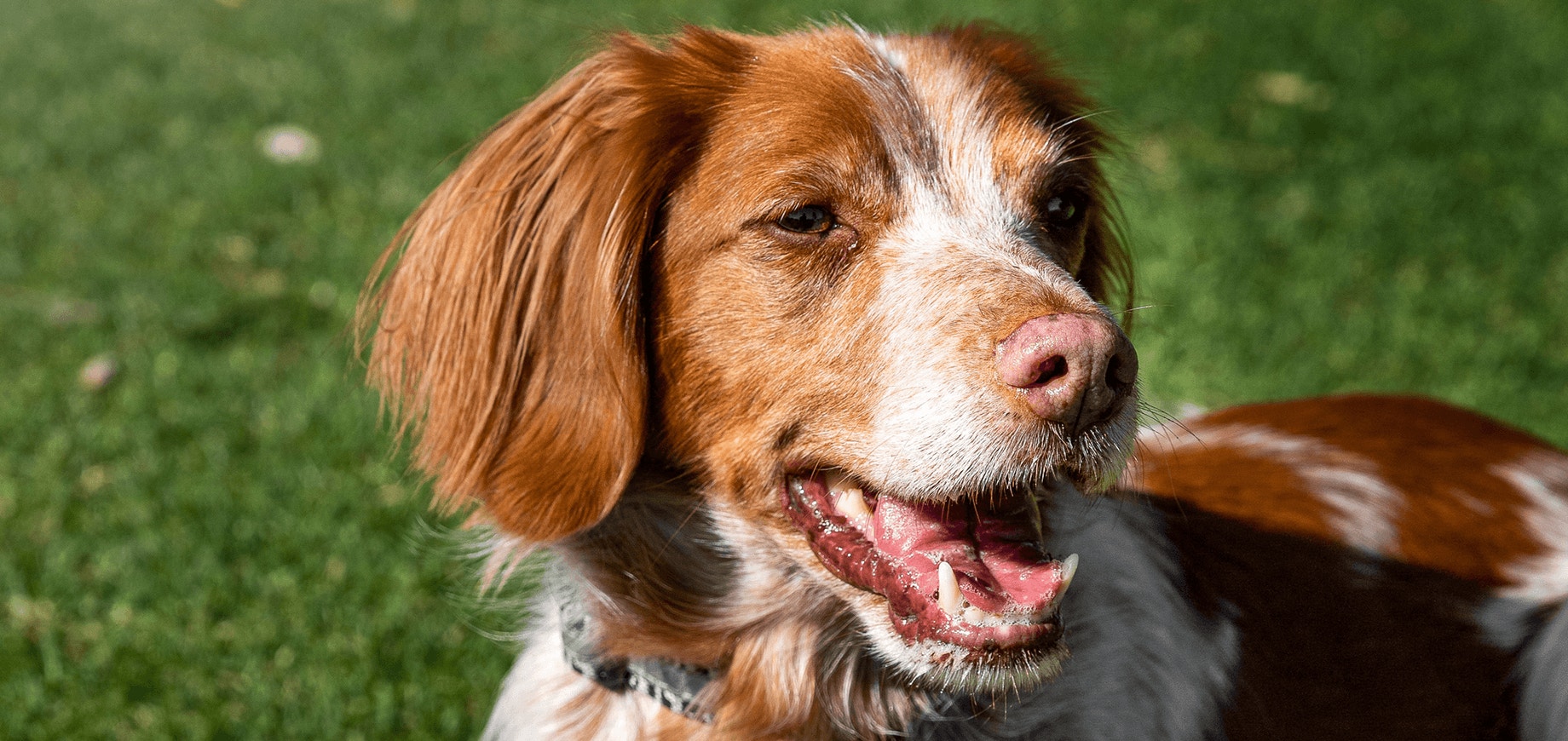
We all want the best for our canine pals, but unfortunately dental care is often overlooked when it comes to caring for them. Failing to look after their oral hygiene not only leads to bad breath in dogs but can also result in gum disease (also known as periodontal disease), which can be painful and have serious knock-on implications for other areas of their health.
To help keep your pooch’s oral health in check, it’s important to have a good dental care routine in place for them and to keep an eye out for signs they could be suffering from dental disease.
Read on to find out more about the symptoms of gum disease in dogs, prevention and treatment of gum disease, and which dog breeds are most prone to dental problems.
Gum disease is a progressive disease affecting the teeth and gums, caused by bacteria in the mouth that develops into plaque and tartar. Factors that can contribute to this include poor oral hygiene, having over-crowded teeth and breed susceptibility.
Unfortunately gum disease is very common among our furry friends. In fact, it’s one of the most common medical conditions seen by vets, affecting around 80% of dogs over the age of three (Kortegaard et al., 2008). By taking care of your dog’s teeth and gums from a young age, you can help to prevent problems forming. As early signs aren’t always obvious, prevention is definitely better than cure.
Gum disease in dogs isn’t something to take lightly. If left untreated, it can leave your dog feeling really rather poorly - not only affecting their teeth and gums, but their whole body. Some of the potential complications of gum disease can include chronic pain, tooth loss, tooth abscesses, and strain on internal organs such as the kidneys, heart and liver. Fortunately, gum disease is largely preventable and if detected early, it can also be treated and reversed.
This means it’s super important to clean your dog’s teeth regularly to prevent bacteria and plaque from getting a foothold. Plaque can harden and form tartar (which is trickier to get rid of and can further irritate the gums) in as little as 72 hours, so it’s best to act fast. For tips on cleaning a dog’s teeth, check out our article on how to brush your dog’s teeth. Scientifically proven dental chews for dogs, such as PEDIGREE® DENTASTIX™, are great for complementing tooth brushing, as they’re designed to combat plaque and tartar and often contain ingredients that freshen breath.
Alongside homecare, it’s also important to take your dog to the vets for a professional oral health check-up once a year and for any necessary treatment to be performed. In between visits, check your pooch’s mouth regularly for signs of irritation, and if they ever appear to be in pain when eating, get them seen by a vet as soon as possible. One tell-tale sign of an issue is when a dog rubs its face along the furniture directly after eating, this is often a sign of a sore mouth. The more your dog gets used to having their mouth checked, the more relaxed they’ll become, so don’t give up.
In order to jump into action when needed, it’s important to know the signs of gum disease. Many of the common symptoms are often brushed off (no pun intended!) as being normal, everyday things that dogs experience, but they can be tell-tale signs that something is wrong. Always contact your vet if you suspect your dog has dental problems.
It’s a common misconception that all dogs have stinky breath - the term ‘dog breath’ didn’t come from nowhere! But the truth is, bad breath isn’t normal, and it is something to take seriously. Bad breath in dogs can indicate gum disease, as well as other health problems, which you can read about in our article about why dogs have bad breath.
The collection of plaque and tartar around the gumline can cause irritation, inflammation and bleeding. This is a condition known as gingivitis and indicates an early stage of gum disease. Early gingivitis isn’t painful and can be hard to detect, but if left will become more serious.
While a lot of dogs won’t allow a bit of discomfort to get in the way of their dinner, if they appear to be struggling to chew, dropping food while they eat, or show a new preference for their wet food over harder dry food, they could be suffering from pain caused by gum disease or damage.
Like bad breath, drooling is often normalised as something dogs simply do. And while there are certain breeds that are prone to drooling more than others (such as Bloodhounds, Newfoundlands, mastiffs, and Saint Bernards), excessive drooling can indicate they’re unwell, including with gum disease.
It goes without saying that a missing or broken tooth isn’t normal, but adult dogs shouldn’t have wobbly teeth either. gum disease can erode the gums and damage the structures that support the teeth, causing issues such as these. If your dog does have a wobbly or broken tooth, they are likely to need a general anaesthetic for the tooth to be removed.
A dog pawing at their face or rubbing their face on the ground is easy to be mistaken for an itch, but it can often signify they’re in pain. If they allow you to, check their mouth to see if you can spot anything wrong and arrange to see a vet.
Swelling on the face can indicate a tooth abscess, which can be caused by dental issues. This is likely to be very painful and will require prompt treatment, so be sure to get your dog an appointment with a vet as quickly as possible.
Fortunately, gum disease can be completely preventable in a lot of cases, so it’s definitely in your pooch’s best interest to get a dental care routine in place for them. Brushing your dog’s teeth daily helps to remove plaque early, before it can start to cause damage or harden into tartar.
Dental chews for dogs, such as PEDIGREE ® DENTASTIX ™, can also help to clean a dog’s teeth and prevent plaque forming on their teeth. While these shouldn’t replace tooth brushing, the unique abrasive texture can assist with removing plaque. If the plaque is left and it turns into tartar, the only way to remove this is with a professional scale and polish at the vets.
Check out our article on the dos and don’ts of dental care for dogs to learn more about how you can look after your pooch’s teeth and gums to prevent gum disease and other troubles.
Some breeds are more prone to gum disease, often because of the shape of their muzzle and positioning of their teeth. These breeds include Yorkshire Terriers, Greyhounds, Whippets, Cavalier King Charles Spaniels, Pugs, Bulldogs, Shih Tzus, and other flat faced breeds. In gerneal small and medium breeds are most at risk of developing gum disease. Older dogs of all sizes are also at a higher risk as gum disease worsens with age if left untreated.
Fortunately, as long as symptoms aren’t too advanced, they can be treated and reversed. Treatment for dog gum disease will usually involve a thorough professional clean to remove plaque and tartar from the teeth and gum line. The vet may also remove any loose, broken or infected teeth. Then it is super important to start a thorough at home oral care regime as soon as your dog has recovered from the treatment.
By maintaining a good oral care routine for your dog and keeping your eyes peeled for any signs of gum disease, such as bad breath in dogs and inflamed gums, you can keep their oral health in top form. PEDIGREE ® DENTASTIX ™ make a great addition to your dog’s daily oral care routine that your furry friend will love. Check out the full PEDIGREE ® DENTASTIX ™ range.
Curious about your dog's gum health? Try our quick and easy Gum Disease Risk Checker to find out more.

